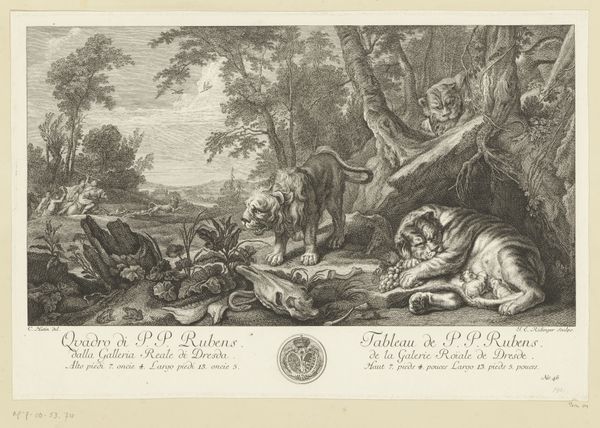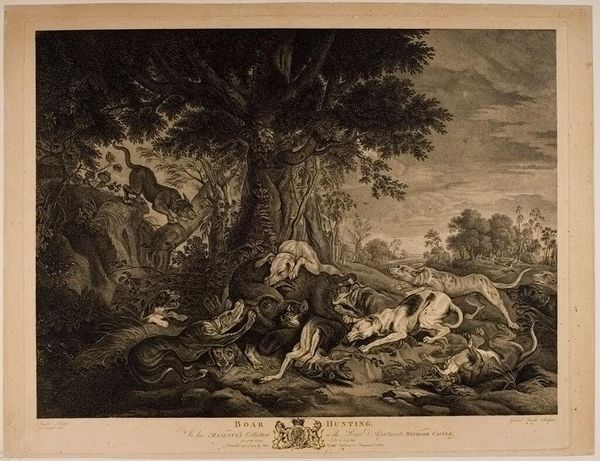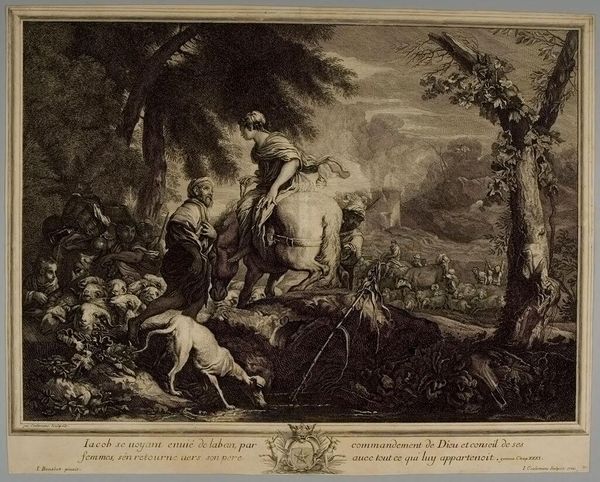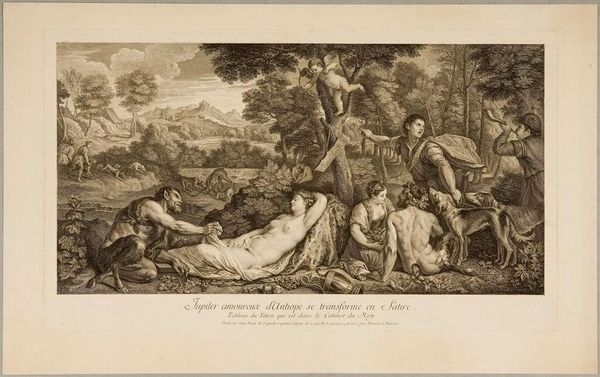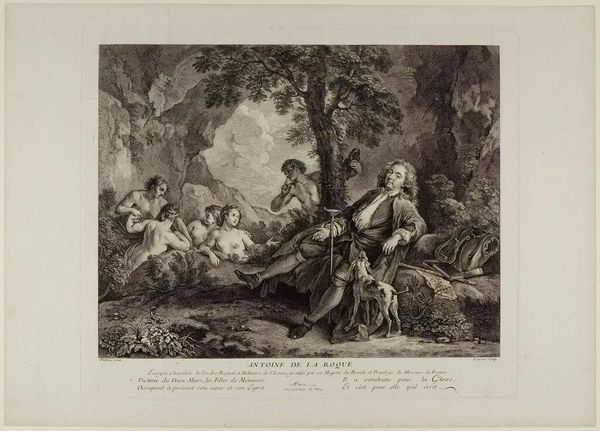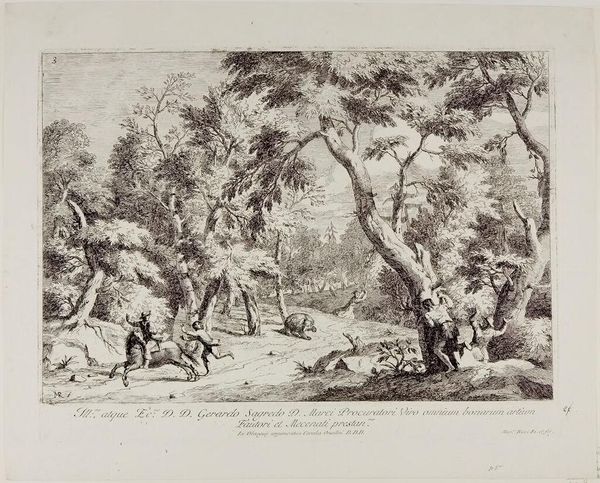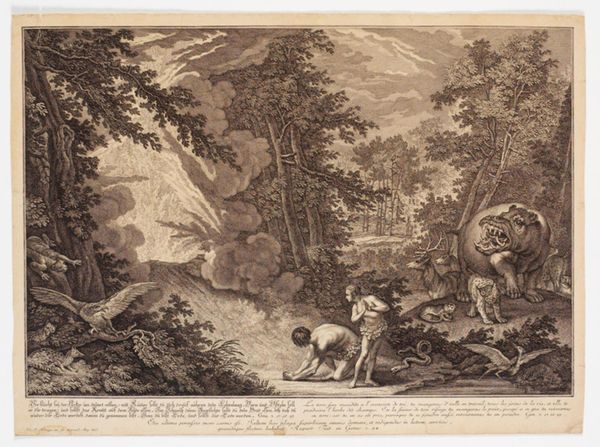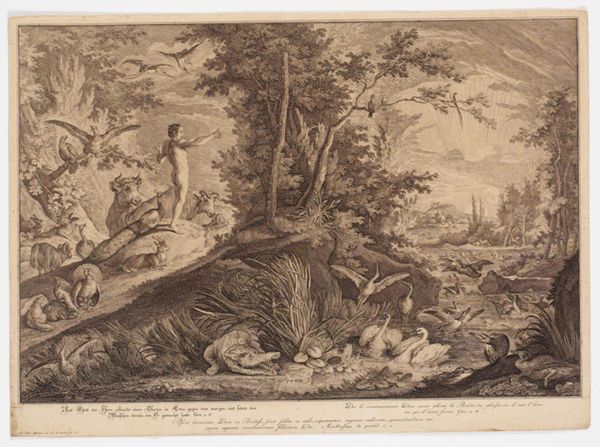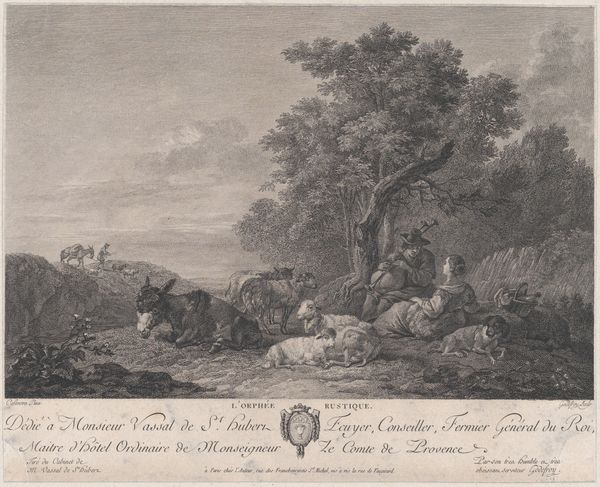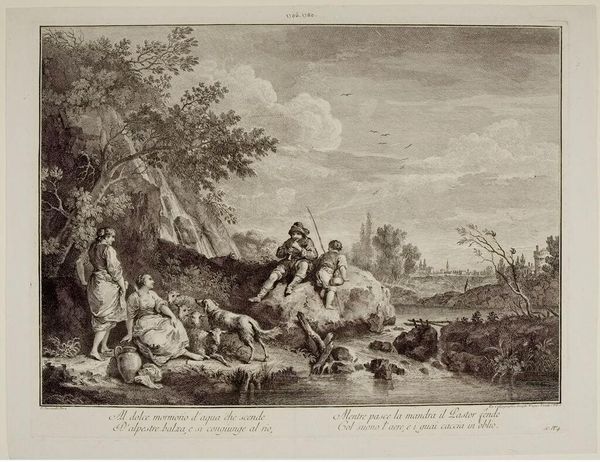
Tigress and Three Cubs 17th-18th century
Copyright: CC0 1.0
Editor: This is Johann Elias Ridinger’s "Tigress and Three Cubs", currently housed at the Harvard Art Museums. The scene feels like a glimpse into a hidden world, both savage and serene. How does this piece reflect the artistic and social context of its time? Curator: This print gives us a window into the 18th-century fascination with the natural world, mediated by the tastes of the European aristocracy. Consider the image's location; the print references being from the Royal Gallery of Dresden. What does it tell us about the purpose of art in such institutions? Editor: It suggests art served to legitimize and project power, using imagery of nature to showcase dominion. Curator: Precisely. The exotic animals became symbols of status, reflecting control over vast empires and the natural world. Perhaps a touch romanticized, wouldn't you agree? Editor: Definitely. It’s interesting to think about how the cultural values shaped the portrayal of nature. Curator: Indeed, it’s a reminder that art is never truly separate from the social and political forces of its time.
Comments
No comments
Be the first to comment and join the conversation on the ultimate creative platform.
